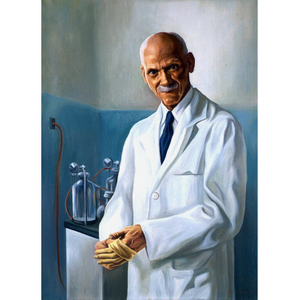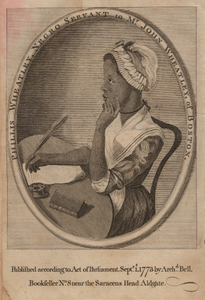Description
In 1940, with German bombers dropping their deadly cargoes daily on British cities, England stood in desperate need of blood supplies for its thousands of wounded civilians. To fill this shortage, the British turned to the African American physician Charles Drew, America's recognized pioneer in the preservation and storage of blood. Drew expeditiously organized the Blood Transfusion Association, and the crisis in war-torn England's hospitals was met. A year later, Drew became the medical director of the American Red Cross's blood-donor project, and it was largely because of his expertise that this enterprise saved many American lives during the war. Yet when the Red Cross ordered that all non-Caucasian blood be stored separately, Drew resigned, stating that there were no scientific or medical reasons for classifying blood by race. Today Drew is universally deemed the "Father of the Blood Bank."The Harmon Foundation, a philanthropic organization based in New York City and active from (1922-1967) included this portrait in their exhibition “Portraits of Outstanding Americans of Negro Origins” which documented noteworthy African Americans’ contributions to the country. Modeling their goal of social equality, the Harmon sought portraits from an African-American artist, Laura Wheeler Waring and Euro-American artist, Betsy Graves Reyneau. The two painters followed the conventional codes of academic portraiture, seeking to convey their sitters extraordinary accomplishments. This painting, along with a variety of educational materials, toured nation-wide for ten years serving as a visual rebuttal to racism.Harmon Foundation commission; gift 1967 to NPG.
Image
Oil On Canvas
National Portrait Gallery, Smithsonian Institution; gift of the Harmon Foundation
Record Contributed By
National Portrait GalleryRecord Harvested From
Smithsonian InstitutionKeywords
- Charles Richard Drew
- Design
- Drafting & Writing Implements
- Drew, Charles Richard
- Education
- Educator
- Educators
- Equipment
- Furnishings
- Furniture
- Health And Medicine
- Home Furnishings
- Interior
- Interior Decoration
- Lab Coat
- Laboratory
- Laboratory Equipment
- Male
- Medical Personnel
- Men
- Microscope
- Microscopes
- Pen
- Pens
- Physician
- Physicians
- Portrait
- Portraits
- Professor
- Researcher
- Reyneau, Betsy Graves
- Scurlock, Robert S
- Surgeon
- Table
- Tables
- Test Tube
- Universities
- University
- Writing Implement





















